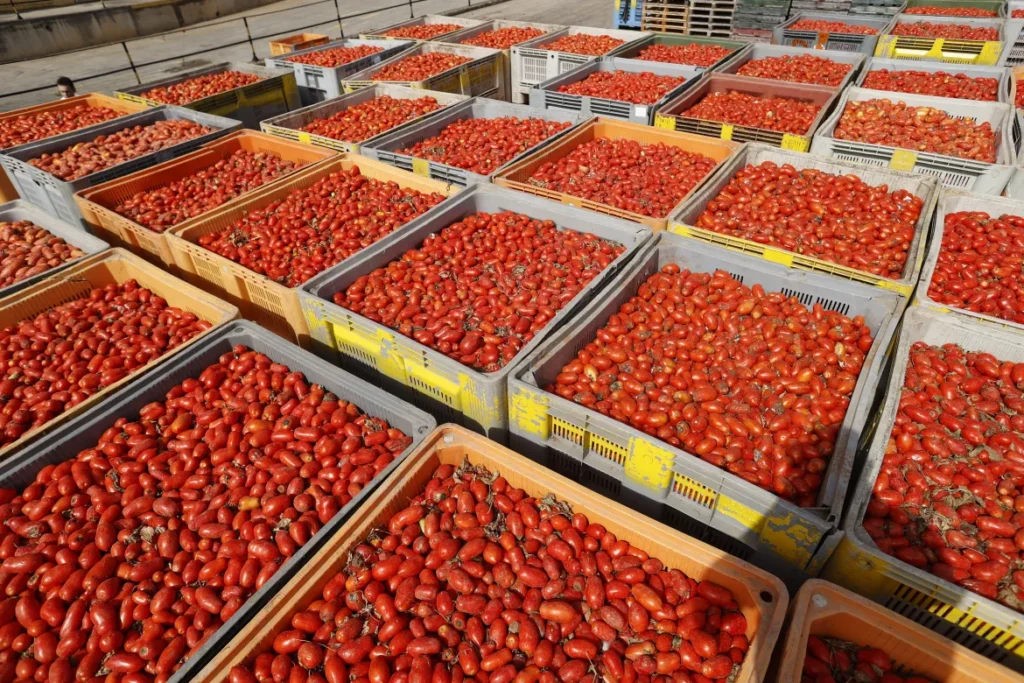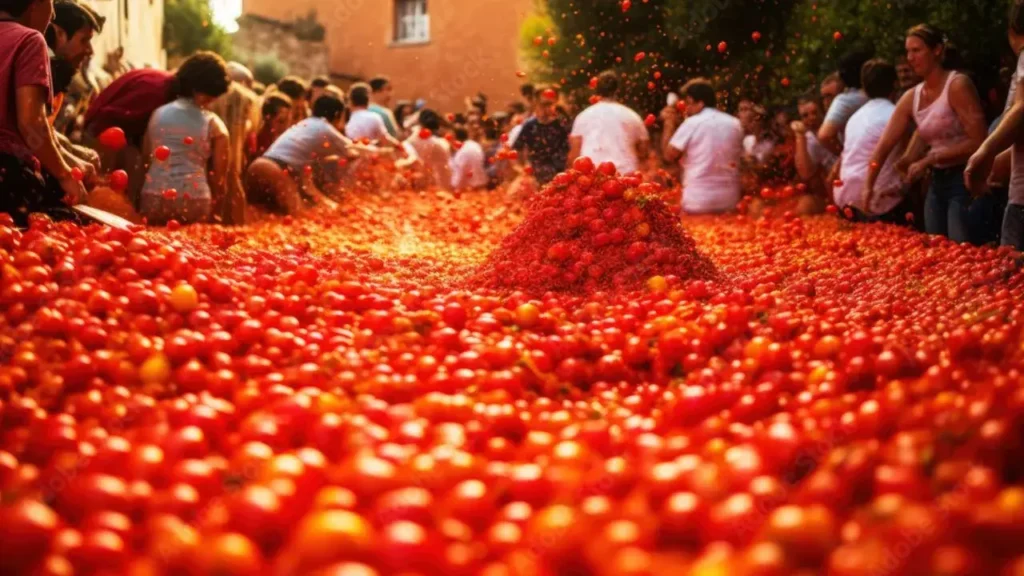Hey there! So, you’ve heard about the Tomatina festival, right? That crazy, colorful event in Buñol, Spain, where thousands of people gather to hurl squashed tomatoes at each other? It’s like the ultimate food fight and one of the most iconic festivals in the world. But have you ever wondered what happens to all those tomatoes after the madness ends? Let’s dive into the juicy details!

A Quick Recap: What is the Tomatina Festival?
First, a little backstory. The Tomatina Festival happens every year on the last Wednesday of August in Buñol, a small town in Spain. It started in 1945 (by accident!) when a playful tomato fight broke out during a parade. Over the years, it became a tradition, and today, it attracts around 20,000 participants from all over the world.
Read more: What is the Tomatina Festival?
Here’s a fun fact: Nearly 150,000 kilograms (or 330,000 pounds) of overripe tomatoes are brought in for the event. Yes, that’s a LOT of tomatoes!
What Happens to the Tomatoes During the Fight?
During the fight, the streets of Buñol turn into a river of red mush. But don’t worry—these aren’t the fancy, fresh tomatoes you’d find in your salad. The tomatoes used are overripe, almost spoiled, and unfit for eating. They’re grown specifically for the festival in the Extremadura region of Spain, where farmers produce them for such purposes.
Once the one-hour tomato war ends, you might think, “Oh no, what a waste!” But here’s the good news: those tomatoes don’t actually go to waste.
Post-Fight Cleanup: How Buñol Gets Back to Normal

1. Tomato Pulp Acts as a Natural Cleaner
Did you know that tomatoes are slightly acidic? This means they can naturally clean surfaces. After the fight, the streets of Buñol may look messy, but they’re actually getting a deep clean! Once the tomatoes are squished, their juices and pulp loosen dirt and grime from the pavement.
Locals even say that the streets look shinier and cleaner than before the festival. So, in a way, the tomatoes are like an eco-friendly cleaning agent!
2. Hosing Down the Town
Right after the festival ends, Buñol’s cleanup crew swings into action. Fire trucks, hoses, and tons of water are used to wash away the tomato pulp. Volunteers and locals join in to help. Since the streets are prepped with tarps and coverings beforehand, the cleanup is surprisingly efficient.
It usually takes just a few hours to make the town look spotless again. Pretty impressive, isn’t it?
3. Tomato Waste Becomes Compost
Once the pulp and leftover tomatoes are collected, they’re not thrown into landfills. Instead, they’re turned into organic compost. Tomatoes are biodegradable, which means they break down easily and enrich the soil.
The compost is often used by local farmers to grow more crops, creating a sustainable cycle. So, in a way, the tomatoes go back to the earth and help grow new plants. Isn’t that a beautiful thought?
4. No Impact on the Environment
One concern many people have is whether the Tomatina festival harms the environment. Thankfully, it doesn’t! Since the tomatoes are grown specifically for this purpose and are composted afterward, the event is eco-friendly. Plus, the cleanup process uses minimal chemicals—just water and some elbow grease.
Why the Tomatoes Aren’t Eaten
You might be wondering, “Why not just donate the tomatoes to people who need food?” That’s a valid question! However, the tomatoes used in the festival aren’t suitable for eating. They’re overripe, low-quality, and not the kind you’d want in your pasta sauce. Plus, shipping them to other regions would cost more than their actual value.
Instead, these tomatoes serve a different purpose: bringing joy to thousands of people and giving Buñol a unique cultural identity.

Fun Facts About Tomatina Cleanup
Number of Tomatoes Used: Approximately 150,000 kilograms every year.
Water Used for Cleanup: The town uses thousands of liters of water, but much of it is recycled or sourced locally.
Time Taken to Clean: Buñol’s streets are spotless within 4-5 hours after the event.
Read more facts about Tomatina festival
How You Can Help If You Attend
Planning to join the Tomatina someday? Awesome! Here are a few ways you can contribute to the cleanup:
1. Follow the Rules: Squash the tomatoes before throwing them. This helps prevent injuries and makes cleanup easier.
2. Volunteer: Some attendees stay back to help clean the streets. It’s a great way to give back to the community.
3. Be Respectful: Treat the town and its people with respect. Remember, they’re hosting this amazing event for you to enjoy!
Wrapping It Up
So, there you have it! The tomatoes used in the Tomatina festival don’t just rot away—they clean the streets, get composted, and ultimately go back to nature. It’s a great example of how a seemingly wasteful event can actually be eco-friendly and sustainable.
The next time someone says, “What a waste of food!” you can confidently tell them that those tomatoes are doing a lot more than just making a mess. They’re cleaning, composting, and contributing to a global celebration of fun and culture.

Wouldn’t you love to be part of this squishy, messy, but ultimately sustainable festival? If you ever get the chance to attend, don’t miss it—it’s a memory you’ll cherish forever!
Let me know if you found this blog interesting or have more questions about the Tomatina festival. Maybe we’ll meet there someday—covered in tomato mush, of course! 😊
Follow our culture page for more such content.
